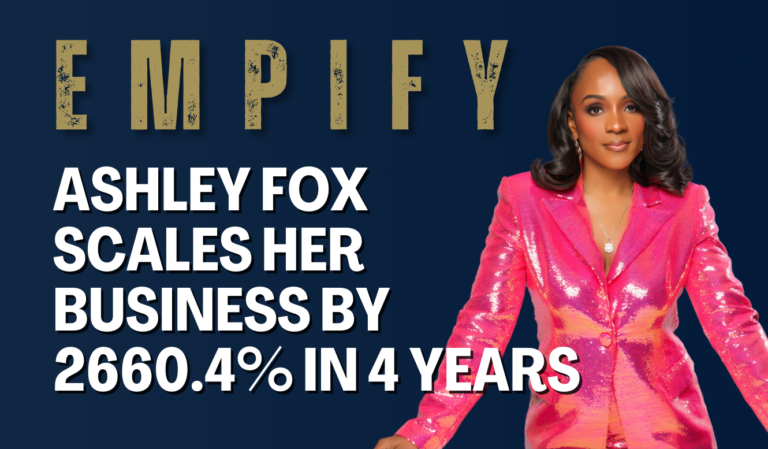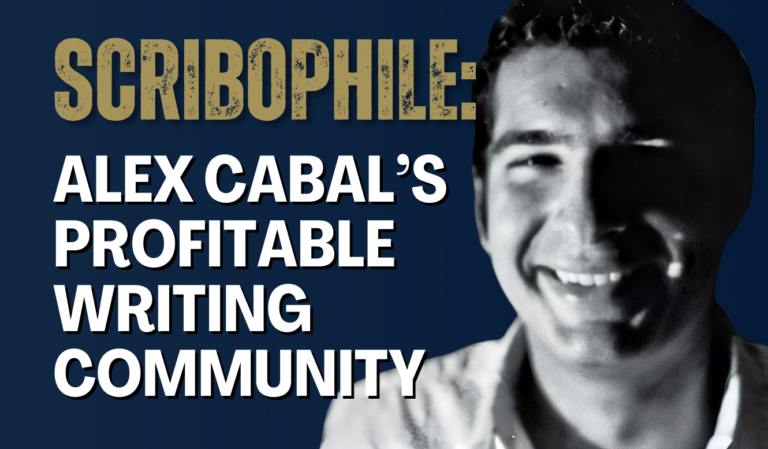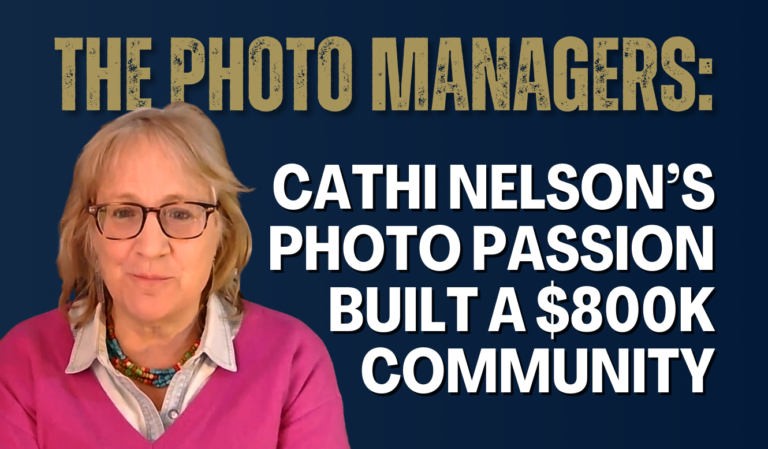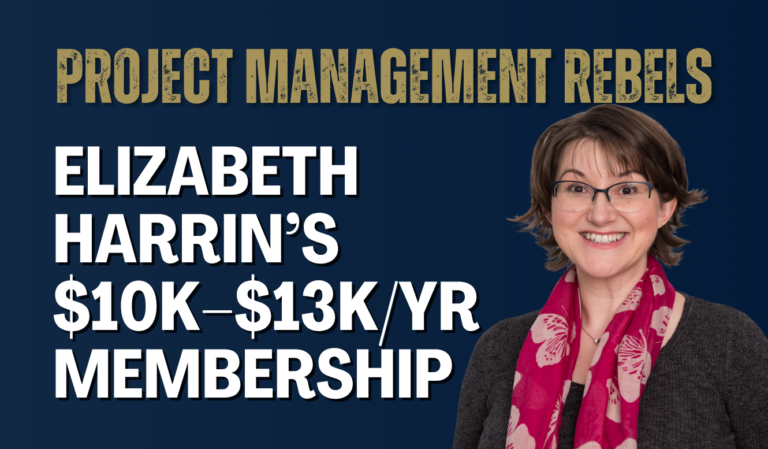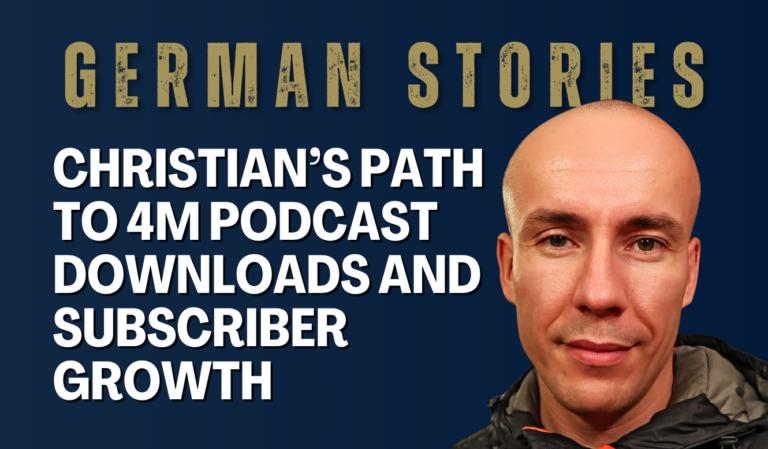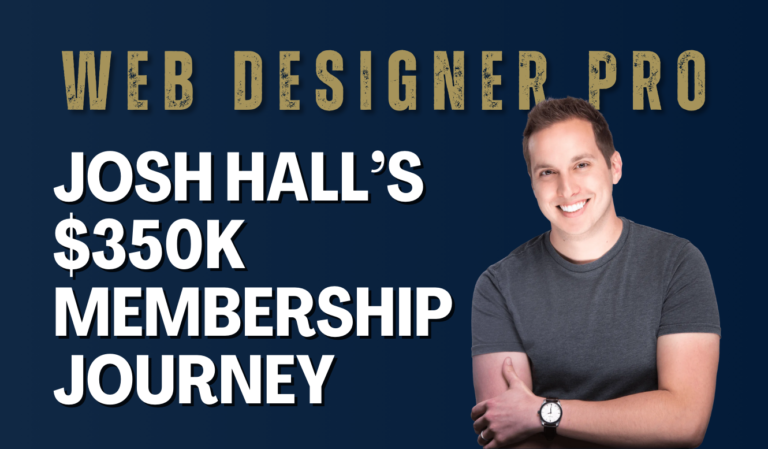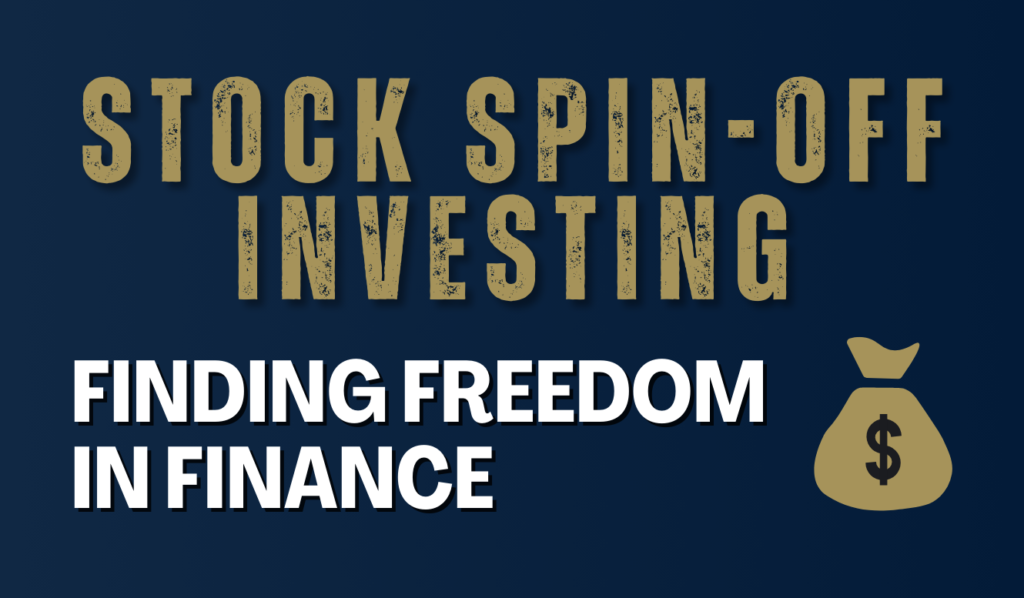
Get case studies from successful membership site founders sent straight to your inbox each week. Click the button below.
Who are you and what is your background?
My name is Rich Howe, and I run a newsletter focused on stock spin-offs which I launched in 2018. Before launching my business, I worked at Eaton Vance in equity research from 2006 to 2013. I earned the CFA designation and covered a broad range of industries. From 2013 to 2018, I worked at Citi Private Bank in the Private Equity Research Group. There I researched and performed diligence research to identify promising private equity fund investments.
What is your business and when did you start it?
My business is called Stock Spin-off Investing. I provide a weekly email and monthly call that covers the stock spin-off market. I also include my 10 highest conviction stock ideas (some of the stock ideas are spin-offs but not all of them). My basic premium service cost $67/month or $697 per year. I also offer a “Pro” version which costs $1,497. This service comes with everything including in Stock Spin-off Investing premium plus video presentations of my latest investment ideas and a weekly email of new ideas that I’ve added to my watch list.
What was your professional situation right before starting the membership site?
I always liked investing in stocks. I graduated college in 2006, and I worked for a company called Eaton Vance, which is based in Boston. They were a decent sized asset manager, like a hundred billion or so. When I joined I was an associate and they wanted everybody to do the CFA program, so we did that. And then you got paired up with a senior analyst or two, learned a couple sectors, and learned from the more senior folks who had been doing it for a little bit longer. I worked at Eaton Vance for maybe about seven years and covered a bunch of different areas like healthcare and internet software.
In 2013, I was looking for a new opportunity. There weren’t that many promotions, so it was either business school or find a new job. I ended up working for Citi Private Banking, the private bank of Citi, obviously the big bank.
I joined the private equity research team and we were researching private equity funds and working with GPs and trying to figure out who is doing interesting things. If we thought, a certain manager had an interesting strategy we would try to partner by raising money through our private bank for high net worth individuals, an ultra high net worth client base. I did that for about five years.
You got to meet some really smart people working at Citi, or any of the big banks really. You can pretty much meet with any of the biggest, the best firms, and some of the smaller and more niche firms that are doing more interesting stuff.
But, I was conflicted. I was waking up at seven in the morning, leaving, coming home seven at night. I never saw my family or the sun. I was like, “You work in finance, you get a bonus at the end of the year. It’s a nice lifestyle.” I knew I was going to make more money over time at Citi, but then you just kind of get trapped into that lifestyle where you’re addicted to that salary.
At the same time, I always wanted to do something entrepreneurial. I read Tim Ferriss’s Four Hour Workweek, and another light bulb went off: “Hey, you don’t have to get VC money, you can start an information business.” And then there’s a lot of other resources, like I was listening to Pat Flynn’s Smart Passive Income podcast got inspired by a lot of the interviews there. Noah Kagan was another guy that I followed and still like. Rameet Sethi, same thing, just kind of learning how to build a business yourself and with low upfront costs. And just kind of do what you love. It seemed like the dream.
I ended up reading an article about the top five regrets of the dying. One that really resonated with me was not having the courage to live the life that I wanted to live. I thought if I die tomorrow, at least I gave it a shot. At least I tried to do something. I didn’t want to have that regret hanging over me and so my situation at Citi was definitely not sustainable.
I understand some people kind of have to do that to make ends meet. And some people are probably working a lot harder than that and working two jobs. So, not to minimize that. But if you can do it, right?
And the other thought that I had, from the Tim Ferriss book actually, was the downside risk. The downside risk for me was probably that I just went back and got another job in finance. So if you really thought about the downside, I probably could get a similar type of job pretty quickly if this didn’t work out.
So I decided to try it. If it worked, amazing… because then I’m in control of my life again. And if it didn’t work out, I’d be doing the same thing I would have been doing anyway. So that was kind of how I thought about it.
And so I started the business when I was at Citi. I started the website, Stock Spinoff Investing, anonymously. I just started publishing some good ideas and got a bit lucky. My first couple ideas did really well. That helped me build up a little bit of traction on the website.
I would have loved to have launched a membership site prior to quitting my job. A lot of people can probably. I just had one kid at that point but was working really hard so didn’t have much free time. I was working nights and weekends but there just was not enough time in the day.
So I saved up some money and had a conversation with my wife and told her I wanted to give this a go. In 2018 I of gave my notice to City that I wanted to pursue something else and then left my job that spring and by the summer of 2018 I had launched.
How did you get the idea to start this particular business?
I read a book, Joel Greenblatt’s “You Can Be a Stock Market Genius” and a light bulb went off. I thought, “Oh my gosh, this is so cool. There are stocks that are being sold indiscriminately, just because there’s spinoffs, no other reason.” Historically, spinoffs have done really well. And there’s all this research that shows that spinoffs are a niche in the market that really outperform. I had done a lot of personal investing in the space. I thought it was really interesting.
It was the part of the stock market that was most interesting when I was at Eaton Vance. They were just focused on the biggest companies, but there’s a lot of smart people looking at the biggest companies, whereas you can find some microcap spinoffs that nobody was really looking at. You could find some really interesting ideas.
But that was the reason that I focused on spinoffs. I thought it was just a cool area of the market that I knew a lot about. I thought I could share my expertise and hopefully, it would be helpful for everybody.
I also found that when you’re publishing a blog or a membership site, it’s almost like having a public journal that kind of holds you accountable. You can kind of learn your lessons and document your lessons.
Financially, it also made sense. I thought, hey with a membership site people can pay me upfront either annually or monthly. You get paid upfront so you have that money to live on and build out your business. It costs very little to start a site, and there is very little upfront costs.
What was the major challenge you faced in starting or scaling it and how did you overcome it?
I published three or four ideas for free and they had done really well. But, when I initially launched, the first couple of ideas that were behind the paid tier did not perform well. So I would say that that was a little bit of a challenge.
If you come up with a new idea that you’re really excited about but it doesn’t work, it gets tricky because I’m personally losing money, I’m investing in all these ideas, and also you feel bad because your subscribers are losing money. Everybody understands that they’re making their own decisions. I’m not an investment advisor, but at the same time, personally, it’s a little bit tough.
I decided to list all my prior recommendations to show that some of them worked out and some of them didn’t. Some are even down 90%. But, some of them are also up over 200%. On average, I’m up ~17% and beaten the S&P 500 by roughly 300 basis points. That’s of now, February of 2024. But, the fact that subscribers can see my past recommendations I think highlights that they’re not all gonna work out.
I think most of the investors that are investing in them are pretty sophisticated, so they get that investment ideas don’t all work out.
Sometimes I have friends that want to get into the stock market. They know that I provide stock recommendations so say they should sign up for my service. I’ve learned to discourage that because, if you don’t have an appreciation for how the game works, you’re going to get scared and you’re going to get spooked out. It’s just not a good fit. If you’re just starting out as an investor, you should not be investing in stock spinoffs. It’s just way too volatile. You’re not gonna have the confidence in the process. It’s a little bit more complicated than just investing in kind of some big cap stocks. They should invest in the SPX ETF.
And then also just the market volatility. I think it was in December of 2019, the market pulled back almost -20%. Your own personal personal account is pulling back, your ideas are tanking because the names that I’m recommending are smaller and more volatile than the overall index. That was a little bit scary.
And then there was the pandemic where the whole market shut down and dropped about -30%. But I think the more market cycles you go through, the more comfortable you are with market volatility. [Editor’s note: While you may be able to caution new investors about market drops, and discuss what will happen and how they will feel in detail, the only way to overcome the impact of a market drop is to experience a few to become less emotionally distressed by them.]
In terms of marketing, you try different things and some things work and some things don’t and you kind of double down on the things that work and shut down the things that don’t work.
For instance, I tried to do basically the exact same thing on Seeking Alpha. I had my membership site, and also a Seeking Alpha tier. I thought it would be really easy to publish the same research on the site, and just copy and paste it onto Seeking Alpha to increase my distribution.
But the problem with Seeking Alpha is that there’s a ton of other membership subscriptions that are for sale there too. And even though I’m not coming up with any new ideas for Seeking Alpha, it still takes time to nurture those people by going into the chat room and respond to questions. That really didn’t add much value for the business, so I shut that down after a year.
What was growth like over the last 5 years?
I launched my product in July of 2018. I remember sending the email, “Hey, I have my paid tier available now.” You get those first couple of emails for new orders and it is the best feeling in the world.
I think I got like $2,000 of revenue in that first month and thought there’s something here. It’s not just me just believing in something that doesn’t exist. And so that was really fun.
The first year you’re growing a lot, you’re growing a ton. You kind of project out your annualized growth rate. You’re like, “Oh my gosh, this year I’m gonna be here. If I’m gonna be here, then I’m gonna be here.” And then it changes. Your focus spreads to things other than your core business so things stagnate.
This month, we’re up to $17.3 thousand in monthly recurring revenue. In the past year, there’s been some growth but it’s been relatively flat. The market was good, but it was magnificent seven stocks ripping while a lot of the small caps weren’t working until the end of the year. And so it makes complete sense that people aren’t that excited to buy newsletters unless the market is going up or the stocks that you’re specialized in are going up. I’m sure AI newsletters will have an insane year this year because everybody wants to learn about AI.
For growth, you go through these phases. So the past year was flat to slightly up. But if I look back 18 months I was up, at that point, 100% year over year. You have these peaks and then it moderates a little before you get another peak or acceleration.
So growth has been good, but varied, year by year.
What was your specific strategy for growing it and how did you implement that?
My strategy is, for better or worse, to publish free blog posts on my site and try to get on the first page for my main keywords. If you type in stock spinoffs into Google, I’m going to be on the first page. If you type “GE spinoff,” my spinoff notes will probably be on there, as well. And so the whole idea is to drive organic traffic.
There’s probably a game that I could play in terms of SEO, but my whole strategy is actually just to try to write good articles about spinoffs instead of trying to game the system. What I worry about is that I optimize for a certain algorithm and then Google changes the algorithm and all my rankings drop off. So like my whole strategy has been to do free articles and blog posts.
I have a free email list where I send out free stuff. I try to get email signups from my website, and then eventually try to get them to to sign up for a paid tier.
One thing that has really worked well for me is doing some partnerships, where you partner with another newsletter provider that’s in a complimentary but different niche to yours. For example, if somebody is focused on dividend stocks, they may feel fine promoting my Stock Spinoff Investing website, and then we split the revenue. That’s been really helpful to increase my distribution.
There’s a lot of benefits to bundling, where you can bundle your product with somebody else’s product and charge a nice discounted price. My gross margin is 100% because I’m creating an information product, so I can take a discount by partnering with somebody else and create a really nice deal for somebody. I’ve done a couple of deals where I’ve partnered with other newsletter providers and bundled our services together and done a really, really attractive discount and that has been really good too.
But there are far more lucrative partnerships possible. Once I left Citi, my former boss at Citi left as well and planned to start an RIA focused on basically finding and researching really attractive private equity funds and then pitching them to RIAs who don’t know how to invest in private equity or they can’t come up with the funds to invest. Most private equity funds need to write like $5 million or $10 million tickets to get access. So what this new firm does is set up a feeder fund to allow RIA clients to invest at $250K ticket sizes into these really attractive funds. And we charge a lot less than Citigroup, JP Morgan, or Goldman Sachs.
My former boss wanted me to come on board as a partner. And I was like, of course, sounds great. I haven’t yet marketed like this new fund, Better Way business, to my Stock Spinoff Investing subscribers, but it’s a natural fit. It’s a natural opportunity. I did one thread on Twitter where a subscriber DMed me about investing or seeing what I’m doing. He’s already invested millions of dollars into the strategies that we’ve recommended. And this would be a lot more lucrative than membership. The guy was paying me only $400 for a subscription where he could be paying us thousands of dollars for fund access and advisory fees. It made me realize that the Better Way business is a natural upsell and it’s much more lucrative.
And so what I’m trying to do is to email my subscribers and say that if you are an RIA and you are interested in private equity investments, let’s talk. That’s an organic outgrowth of the spinoff website that I definitely didn’t see coming.
Doing podcasts has helped a lot with spreading awareness of the site. I always get a bump after I do podcasts. It’s kind of nice because you could wake up at 2 a.m. in the middle of the night to do a podcast and you would have all the answers. You don’t have to like really prep that much. That’s what I like about podcasts. But again, there’s only so many you can do. We’re not going to get on, at least not yet, big podcasts such as Invest Like the Best. But, over time, you definitely could.
Twitter’s been really good too, not only to find new investment ideas, but also to find people who are interested in learning about stock ideas. Twitter is the biggest social platform for me. That’s where a lot of people find me.
I had no real Twitter strategy. I would just kind of post links on Twitter starting in 2016 when I started my website. But, I’ve developed more of a strategy where I, will try to do threads every once in a while and drive engagement, get new traffic, and get new subscribers. I have had somebody for a while doing threads for me on Twitter.
There’s definitely an algorithm, things that Twitter likes, but I found that I didn’t think I was attracting the followers that I wanted to, or who weren’t necessarily converting to revenue. Post a picture of Warren Buffett and that thread will blow up and you’ll get a bunch of followers, but I just don’t know how helpful that actually is.
And so I’ve kind of scaled back on like just trying to get followers. I’ve been more focused on just trying to post stuff that I think is more interesting and that appeals to me instead of trying to post mass market Tweets such as the nine things you need to know today. I’ve just been trying to post stuff that I find interesting, threads that I find interesting, and dig deep into the areas of the market that I find are more interesting. I find that that attracts like-minded people.
LinkedIn apparently is pretty big but I’m kind of still experimenting with LinkedIn. I haven’t touched Facebook or Instagram. Every once in a while I’ll post a link to my website on my personal Facebook page and it gets no interaction whatsoever. It just kind of feels weird because there’s a picture of my kids and then the next one’s stocks, the posts aren’t lasting, so I got to stop with Facebook.
I’ve been running the site for five years now. Right now I’m trying to simplify my process and do less things. You start out, you’re like, “Oh if I had this service and this service and pile them on top of each other, it would open up a new market opportunity or maybe allow me to provide this specialized service for this bunch of investors,” but then that becomes less scalable because your attention is just spread thin. So, right now I’m just trying to kind of focus on my core offering and just make it really good, make the stock picks really good, have the engagement really high in our community, and kind of accelerate growth that way.
It’s kind of a wait and see, trial and experiment process, and then just kind of double down on the things that are working.
If any of your people listening or watching like have any advice or wanna reach out and brainstorm, I’d love to do it. Because I’m sure there’s a lot of low hanging fruit that I don’t do.
How much money is the business making now and what is the revenue mix?
It’s around $17k per month right now on average, but it’ll vary. Last month in January it was maybe $8k while in November, December, it was around $40k. So the variability is pretty crazy.
I got a big check from the Better Way business, this is the private equity advisory business, in January so that helps and builds in a little diversity and consistency.
I would love to smooth out the revenue a little bit, and I think it would be as simple as like planning sales events for January and February. I gotta get a little bit better about that. And then it’d be great to get the revenue in January because then I wouldn’t have to pay taxes on it for another 12 months. When you get it at year end, you have to pretty immediately pay taxes.
Revenue is also very seasonal for whatever reason. And I’d love to fix that. I’ve tended to raise prices in October, or November. And I also tend to do sales or partnerships in November and December. So, October, November, and December are my biggest months. And then January, February, and the spring are definitely my lowest months. I need to figure out a way to even that out because it’s definitely not consistent.
If you were advising someone on starting a similar company today, what would you tell them is the key area to focus on and which strategy should they use to address it?
This is in no particular order. In terms of a news site that is focused on the stock market, I would say email is really important. You have to be collecting emails right off the bat. Collecting emails is incredibly important.
I would say Twitter has been really important. So get involved with Twitter. And follow, if you’re not already involved, follow people that have written something about a stock that you find really interesting and build out your follower list organically instead of just following the biggest names.
And then, I would say, the longer that you can go free the better because it’s easier to build up free subscribers, and then eventually those will convert. For me, it’s around 10% or 12%. And, it’s just a lot easier to build up your email list when you’re just publishing for free. Stuff can go viral. Your investment ideas can go viral. So, I think that is a big thing.
I would say to do things like speak over Zoom or in person with people because you can form real relationships. I’ve cold emailed people and just gotten on the phone and we’ve figured out ways to work together where it’s kind of a win-win for both of us. Meeting in person or over Zoom or on the phone has been really helpful. For me, you can learn marketing ideas, and the beautiful thing about running your own business is you don’t have to get decisions approved by your manager or by compliance or anything like that so you can make a marketing decision and execute it super quickly.
I would say membership businesses in the stock market space are competitive. For example, with Substack, when I was publishing there wasn’t any Substack. So, it was a little bit harder to start your own website. And I feel like Substack has made it a little bit more competitive in terms of the amount of good Information and free content out there. So, I mean not that you necessarily shouldn’t do it, but it is a little bit more competitive than I thought it was.
Definitely worth it, though. You have nothing on your calendar. It’s like, all I have is basically talking to you today and everything else I can basically decide what I wanna do. And so it is amazing. My quality of life is insanely high. I’m always obviously trying to grow and make more money. But in terms of like the big things, right? I get to spend time with my kids. I got two young kids, and my wife and I are balancing time with them and all that other stuff. But yeah, it’s highly recommended. It’s the power of the Internet. It’s amazing that you as an individual entrepreneur can create a business with basically unlimited scale. I have subscribers in Brazil. I have subscribers in Portugal. I have subscribers in China. I have subscribers in India. They all follow me from Google, right? I haven’t done any paid advertising. And then it’s also just fun to be connected with like-minded folks.
The one thing that I have done that I think is interesting is, to have a Discord account that’s set up with my membership site. And so people can chat and interact and come up with new ideas. The whole idea is user-generated content. And I can do a better job about optimizing that. But it’s nice to have because it allows people to just chat. And even if they don’t like your recommendations, they might not want to leave the Discord group, so they may stay on as subscribers. That’s something that people have found valuable.
You kind of need to have like a critical mass of people on there to make it worthwhile, though. So you probably wouldn’t want to start that initially, but maybe once you have 50 or 100 subscribers, you could start that and use that as a nice incentive for somebody to want to sign up.
Do podcasts. Podcasts are good like we talked about.
I would say raise your prices. Every time I raise my prices, I email my list saying that I’m going to be raising my prices so to sign up before a particular date and you’ll be grandfathered in at your original rate. That always works incredibly well. It also shows people that you have a high value product, that you can raise prices. There’s a psychological angle to that. So raise prices periodically.
Sales are very helpful. I feel like people just need urgency. They need a reason to act. And if you’re like, hey, for seven days, we’re doing the sale. Once it’s done, it’s done. I’ve had subscribers that have signed up for sale and then upsell, upsell, upsell, and are paying me like thousands of dollars a year, but they initially got enticed from a sale. I personally know a lot of people are kind of anti-sales and you don’t want to dilute your brand and I get that. I’m kind of more pro-sales because it allows you to create some urgency for people to act.
Those are some things that I would definitely focus on if I were starting again.
What’s next for you?
I want to really focus on spinoffs and really double down on the quality of my research. I was ghostwriting for another newsletter provider and bringing some income, which was great but it just took time. I found that I was too diluted and I wasn’t spending enough time focused on my core offering. So, for 2024 the goal is to refocus on spinoffs, really double and triple down, and really just focus there.
The more time I spend on spinoffs, the better the product is gonna be for my existing subscribers. And the marketing is going to take care of itself because I’m going to be able to find better ideas and have case studies on those ideas and the marketing is going to kind of take care of itself. So that’s kind of the idea there.
And then, I’ve been doing Better Way for four years, the private equity advisory business. I plan on sharing that capability with my subscribers because we do have one subscriber who has invested a lot with us. I’d love to find other investors that would benefit from having kind of that private equity capability added to their RIA. And so I’d say those are the two focuses for 2024.
Get case studies from successful membership site founders sent straight to your inbox each week. Click the button below.

